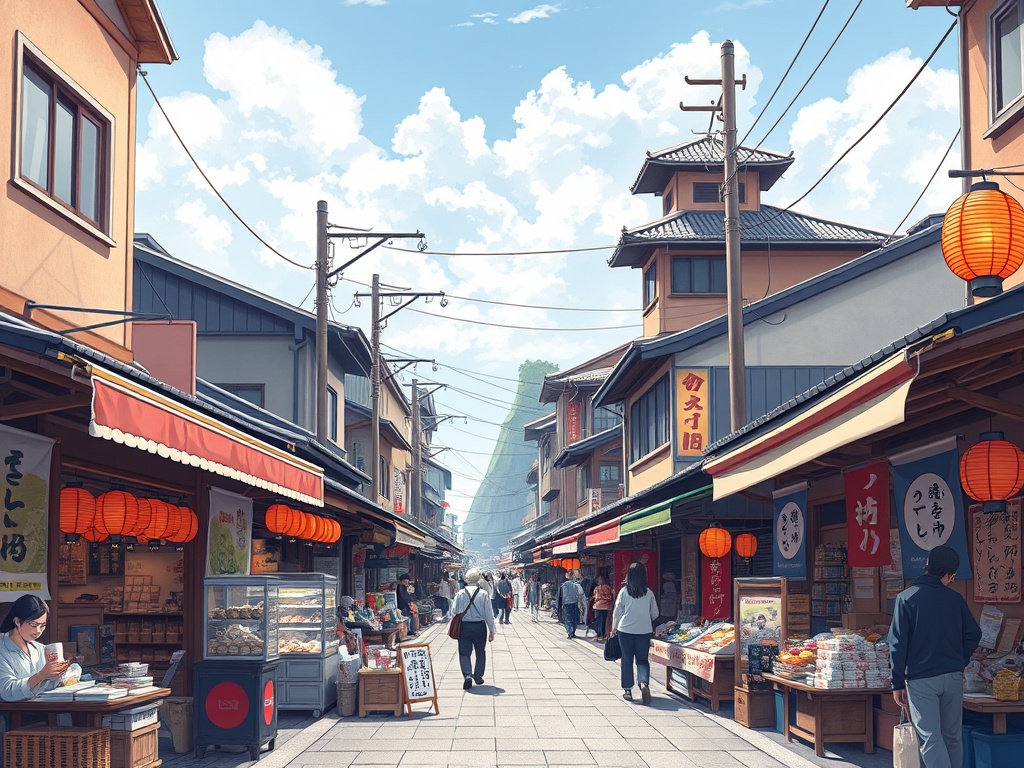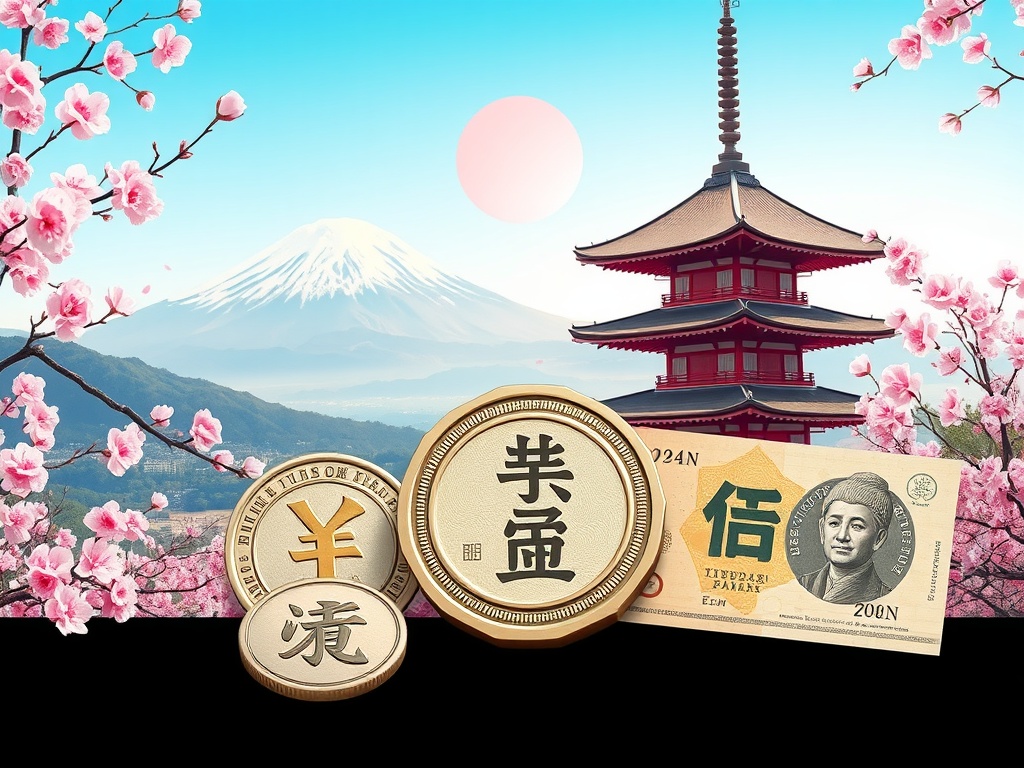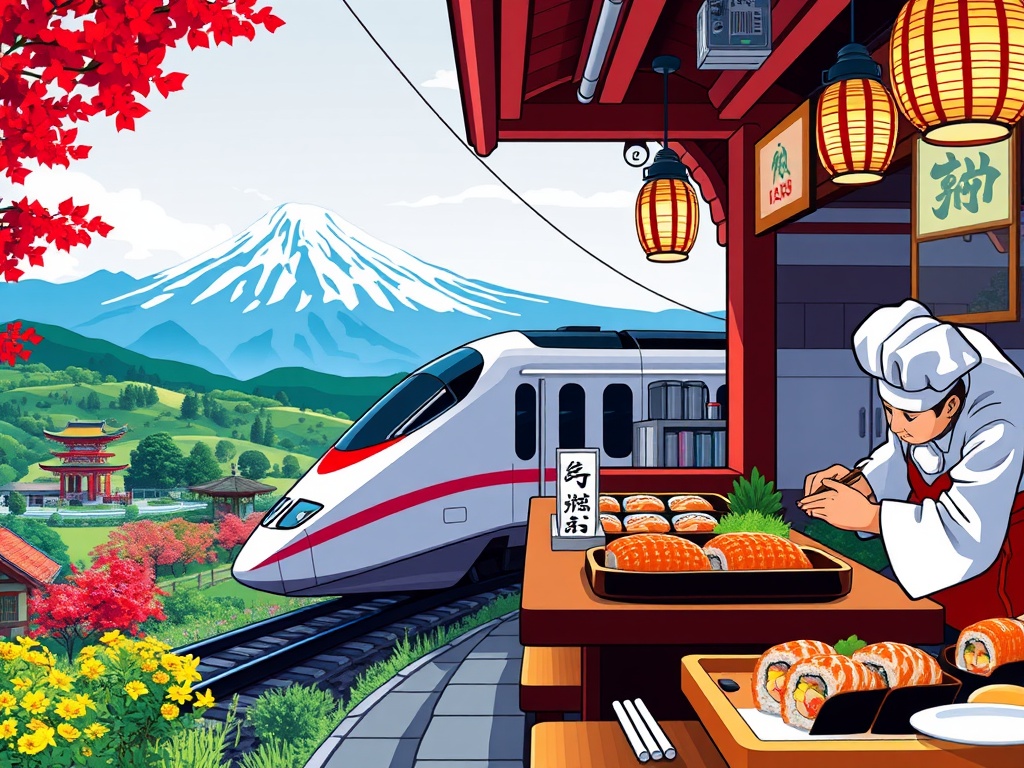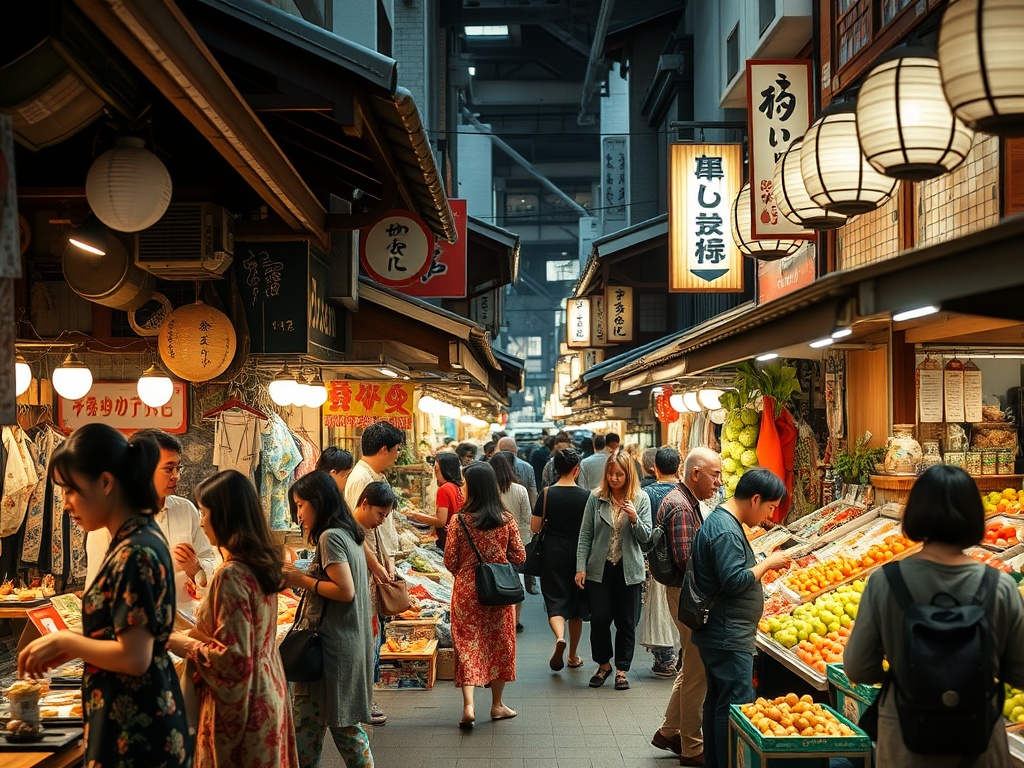The Yen: Unraveling the Mysteries of Japan’s Unique Currency
Win a Free Trip to Japan!
Experience cherry blossoms and ancient temples
The Japanese Yen, often symbolized as ¥, is not just a medium of exchange but a cultural emblem that tells the tale of Japan’s rich history and economic prowess. As a traveler, understanding the nuances of the Yen can enhance your journey, offering insights into the country’s economic landscape and its impact on everyday life. Let’s delve into the fascinating world of Japan’s currency, unraveling its mysteries and quirks.
Introduced in 1871, the Yen replaced the complex monetary system of the Edo period, symbolizing a new era of modernization. Its inception marked Japan’s step towards a centralized financial framework, aligning with Western standards. Over the decades, the Yen has witnessed economic booms and recessions, each phase leaving its imprint on the currency’s value and design.
- 1871: Yen officially adopted, replacing the old monetary system.
- 1949: Yen pegged to the U.S. dollar, stabilizing post-war economy.
- 1973: Transition to floating exchange rate, reflecting market dynamics.
- Present Day: Yen as a global currency, integral to international trade.
Traveling in Japan means adapting to a culture where cash is still king. While credit cards are gaining popularity, the Yen remains the preferred mode of transaction in many areas. Here are some practical tips to navigate your way around with the Yen:
- Cash is Crucial: Keep cash handy for small purchases, especially in rural areas and traditional markets.
- ATMs: International ATMs are available in convenience stores; however, ensure to check for service fees.
- Coins Matter: Familiarize yourself with Japanese coins, as they are frequently used for transactions.
- Exchange Rates: Monitor exchange rates to make the most of your currency conversions.
From Sushi to Shinkansen: How Japan’s Economy Shapes Your Travel Experience
The Japanese economy is a fascinating blend of tradition and innovation, seamlessly interwoven into everyday life. As you journey through Japan, from savoring sushi in a cozy corner restaurant to speeding across the country on a Shinkansen, you’ll discover how the economic engine of Japan fuels these unique experiences. Each aspect of Japanese culture, from its culinary delights to its technological marvels, is a testament to an economy that is deeply rooted in efficiency and excellence.
Dine at a traditional sushi bar, and you’ll taste the meticulous craftsmanship that stems from Japan’s emphasis on quality and precision, a reflection of its economic principles. The sushi experience is not just about taste but also about understanding the art of balance and harmony, values deeply ingrained in the Japanese economic mindset. The fresh seafood on your plate is a result of a sophisticated supply chain, showcasing Japan’s prowess in global trade and logistics.
Meanwhile, the famous Shinkansen, or bullet train, offers more than just a fast travel option; it embodies Japan’s economic dedication to innovation and punctuality. As you glide through the countryside at high speeds, you witness firsthand the result of decades of investment in infrastructure and technology. The Shinkansen is a symbol of Japan’s commitment to progress, efficiency, and environmental consciousness, qualities that are central to its economic identity.
Japan’s economy has a significant impact on its cuisine, shaping not just what is eaten, but how it is prepared and consumed. The country’s economic policies have encouraged local production and freshness, leading to a culinary landscape rich in seasonal and regional specialties. This focus on local produce supports small businesses and ensures that every meal is an exploration of Japan’s diverse economic geography.
The economic framework of Japan prioritizes innovation, particularly in transportation, which is evident in the country’s extensive railway network. From the local trains to the high-speed Shinkansen, Japan’s railways are a marvel of economic planning and technological advancement. Travelers benefit from a system that is not only efficient and reliable but also a crucial part of Japan’s economic fabric, connecting cities and facilitating commerce.
The Art of Bargaining: Navigating Japan’s Shopping Culture
Japan is a country where tradition and modernity coexist harmoniously, creating a unique shopping culture that is both captivating and distinctive. While the notion of bargaining might conjure images of bustling markets in other parts of Asia, Japan presents a different landscape where price negotiations occur in a more subtle and respectful manner. Understanding the nuances of Japanese shopping culture can significantly enhance your travel experience, allowing you to engage more deeply with the local economy.
Shopping in Japan often involves a blend of traditional values and contemporary practices. In most retail settings, prices are fixed, and the act of bargaining is not commonly practiced as it is in other countries. However, in certain marketplaces, especially in areas like Nakamise-dori in Asakusa or in some flea markets, there might be some room for negotiation. Here, it’s important to approach the process with a sense of respect and politeness—key components of Japanese culture. A simple smile and a polite inquiry about the price can sometimes lead to a friendly discussion, but always be prepared to accept the initial price gracefully.
One of the fascinating aspects of shopping in Japan is the country’s deep appreciation for craftsmanship and quality. Whether you’re purchasing a piece of delicate pottery or a beautifully crafted kimono, the price often reflects the hours of meticulous effort and the artisan’s skill. Recognizing this value is crucial when shopping; it helps in understanding why prices might be higher and why bargaining might not always be appropriate. Embrace the opportunity to learn about the history and technique behind your purchase, which adds a layer of cultural richness to your shopping experience.
In tourist-heavy areas, where shops cater to a diverse clientele, there might be more flexibility with prices. Engaging in light-hearted banter or showing genuine interest in an item can sometimes lead to discounts, especially if you’re buying multiple items. Nevertheless, always be mindful of the cultural context. Bargaining should be seen as a way to build rapport with the vendor rather than simply reducing the price. This approach aligns with the Japanese emphasis on relationship-building and mutual respect.
Economic Powerhouses: Exploring Japan’s Iconic Business Districts
Japan, a nation synonymous with economic resilience and innovation, boasts a number of iconic business districts that embody its financial might. These districts, pulsating with energy and ambition, offer a glimpse into the heart of Japan’s economic engine. As a traveler, exploring these areas provides an unparalleled insight into the country’s business acumen and cultural ethos. Each district possesses a unique character, shaped by its historical evolution and modern-day significance.
Tokyo, the capital city, is home to some of the world’s most influential business districts, notably Marunouchi and Shinjuku. Marunouchi, nestled between the Imperial Palace and Tokyo Station, is a symbol of Japan’s economic prowess. Here, towering skyscrapers house the headquarters of multinational corporations and financial institutions. The district’s architectural landscape is a testament to modernity, yet it seamlessly integrates with historical landmarks, reflecting Japan’s balance of old and new. Visitors can experience the dynamic business culture while enjoying the serene beauty of the adjacent Imperial Palace East Gardens.
Meanwhile, Shinjuku offers a different flavor of business vibrancy. Known for its bustling streets and neon lights, Shinjuku is a microcosm of Japan’s economic diversity. It hosts a mix of corporate offices, government buildings, and entertainment venues. The iconic Tokyo Metropolitan Government Building provides panoramic views of the cityscape, underscoring the district’s importance as an administrative and commercial center. Exploring Shinjuku means diving into a world where business and leisure coexist harmoniously.
Often referred to as the ‘merchant city’, Osaka is another cornerstone of Japan’s economic landscape. Its vibrant business district, Nakanoshima, is renowned for its trade and commerce legacy. Situated between the Dojima and Tosabori rivers, Nakanoshima is a hub of financial activity, home to major banks and trading companies. The district’s historical significance as a trading post is celebrated through its many museums and cultural sites, offering travelers a rich tapestry of economic history and modern business dynamics.
Osaka’s economic influence extends beyond traditional business, with areas like Umeda, known for its upscale shopping and dining experiences. Here, travelers can witness the interplay of commerce and culture, as the district buzzes with both international and local economic activities. The city’s emphasis on hospitality and innovation is evident in the diverse range of services and products available, echoing Japan’s overarching economic principles.
Investing in Tradition: The Economic Role of Japan’s Cultural Heritage
Japan, a land where ancient traditions and futuristic innovations intertwine, offers a captivating lens into how cultural heritage plays a significant role in its economic tapestry. For travelers immersing themselves in this vibrant landscape, understanding the economic implications of Japan’s cultural assets can enrich their journey, offering a deeper appreciation for the country’s commitment to preserving its past while fostering economic growth.
The interplay between tradition and economy in Japan is not merely a backdrop but an active participant in shaping the nation’s financial health. Cultural heritage sites, traditional crafts, and centuries-old festivals are not only testaments to history but also key economic drivers that attract millions of tourists annually. This infusion of tourism revenue supports local communities, sustaining traditional practices and fostering a thriving cultural economy.
Heritage tourism is a cornerstone of Japan’s economic strategy, leveraging its rich history to draw in visitors from around the globe. Iconic landmarks such as the historic temples of Kyoto or the timeless beauty of Nara’s shrines serve as magnets for cultural travelers. These sites are meticulously maintained, reflecting the Japanese philosophy of preservation and innovation. The influx of tourists not only boosts the local economy but also ignites a broader interest in cultural education and exchange.
Moreover, the preservation of cultural heritage is intricately linked to Japan’s economy through government initiatives and private investments. By funding restoration projects and promoting cultural festivals, Japan ensures that its traditions remain vibrant and economically viable. This strategic investment in tradition enhances the country’s global image, positioning Japan as a leader in cultural tourism and economic sustainability.
Japan’s artisanal crafts, from the intricate art of katanas to the delicate beauty of kimonos, represent an essential aspect of its cultural economy. These crafts are not only cherished by collectors and enthusiasts but also serve as symbols of Japan’s artistic heritage. The economic impact of these crafts is profound, with workshops and artisans contributing to local economies and preserving time-honored skills.
The global appreciation for Japanese craftsmanship has led to an increased demand for authentic products, creating international markets and opportunities for cultural exchange. By investing in these traditional industries, Japan not only safeguards its cultural heritage but also opens new avenues for economic growth and global influence.
Tech Titans: Discovering Japan’s Cutting-Edge Economic Innovations
For travelers fascinated by the intersection of tradition and technology, Japan offers a mesmerizing tableau of economic innovations that are reshaping the global landscape. Often viewed as a pioneer in merging cultural heritage with technological progress, Japan stands as a beacon of economic ingenuity where ancient wisdom meets futuristic thinking. As you traverse the bustling streets of Tokyo or the serene avenues of Kyoto, you’ll find that Japan’s technological prowess is not just a backdrop but a vibrant thread woven deeply into the country’s economic fabric, making it a must-see for any travel enthusiast keen on understanding global innovation trends.
In the realm of artificial intelligence and robotics, Japan has emerged as a world leader, consistently pushing the boundaries of what’s possible. From the humanoid robots greeting you at hotel check-ins to AI-powered systems optimizing urban transportation, these technologies are not only marvels to behold but also crucial components of Japan’s economic strategy. As you explore cities like Tokyo and Osaka, you’ll notice how seamlessly these innovations integrate into daily life, reflecting Japan’s commitment to technological advancement and economic efficiency.
The country’s focus on robotics stretches beyond mere novelty; it is a reflection of Japan’s strategic response to demographic challenges such as an aging population. By investing heavily in robotics, Japan is setting benchmarks for industries worldwide, creating opportunities for travelers to witness firsthand the future of automation and its economic implications. Engage with these technologies during your visit to robotics museums or tech expos, where Japan’s cutting-edge advancements offer a glimpse into the future.
Japan’s dedication to sustainable development is evident in its pioneering green innovations, which play a pivotal role in its economic landscape. As a traveler, experiencing Japan’s commitment to sustainability is as accessible as taking a ride on an electric bullet train or staying in an eco-friendly ryokan. These innovations highlight Japan’s drive to balance economic growth with environmental stewardship, offering a model of how economies can thrive while prioritizing the planet.
From renewable energy projects to waste-free manufacturing processes, Japan’s green initiatives are not only transforming its own economy but are also influencing global practices. By embracing renewable technologies and sustainable practices, Japan is demonstrating how economic innovation can align with ecological responsibility. Travelers can explore these advancements through visits to eco-parks and green technology museums, enriching their understanding of Japan’s role in fostering a sustainable future.
Japan’s economic innovations, characterized by a harmonious blend of tradition and modernity, offer travelers an immersive experience into a nation that continuously redefines the concept of progress. As you explore this land of contrasts, you’ll gain invaluable insights into how technological advancements underpin Japan’s economic identity, providing inspiration and knowledge to carry into your own travels.



